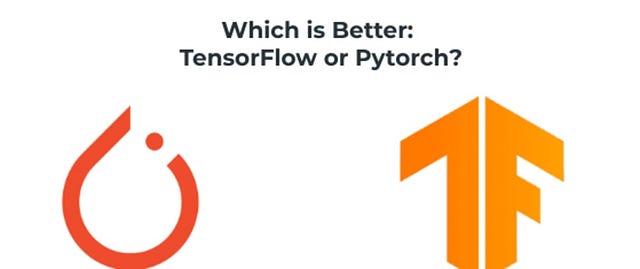Which is Better: TensorFlow or Pytorch?
In this blog post, we will compare two of the most popular deep learning libraries: TensorFlow and Pytorch. We will go over their different strengths and weaknesses, as well as how to use them in your project. It is important that you choose the right library for your needs; otherwise, you might end up spending a lot of time trying to fix things that could have been avoided altogether.

What is TensorFlow?
TensorFlow is a library for machine learning and neural networks. It's open-source, so anyone can use it without having to pay anything. It was created by Google and is currently the most popular machine learning library in the world. TensorFlow has a lot of features, but one of its main strengths is that it can be used for both training and inference (inference means running your machine learning model on new data).
What is Pytorch?
Pytorch is a deep learning library for Python. It has many features that make it very appealing to developers, such as dynamic graphs and autograd. Autograd is a feature that helps you keep track of the gradients of your functions, which is important for deep learning. Pytorch also allows you to write code in Python, which makes it a very popular choice among developers.
How are they different?
There are a few main differences between TensorFlow and Pytorch. First, TensorFlow is written in C++, while Pytorch is written in Python. This means that TensorFlow is faster and more efficient, but it can be a bit harder to use than Pytorch. Second, Pytorch is more flexible than TensorFlow; for example, with Pytorch you can change the size of your data while it is being trained, which is not possible with TensorFlow. Finally, Pytorch has a more active community than TensorFlow, which means that you will have an easier time finding help and support if you need it.
Which one should you use?
Both TensorFlow and Pytorch are very powerful tools, but they each have their own strengths and weaknesses. If you're looking for a library with easy-to-use APIs and great documentation, then TensorFlow might be your best bet. If you want something that's more flexible and has an active community, then Pytorch may be what you need.
So, which should you choose for your deep learning needs? TensorFlow or PyTorch? The answer is that it depends on what you want to use it for. If you are looking for a more user-friendly experience with strong support from the community and many libraries available, go with PyTorch. However, if you need greater performance and stability in production environments, then TensorFlow is the better option. Whichever one you decide on, be sure to dive in and start experimenting!
images.cv provide you with an easy way to build image datasets.15K+ categories to choose fromConsistent folders structure for easy parsingAdvanced tools for dataset pre-processing: image format, data split, image size and data augmentation.
Visit images.cv to learn more








